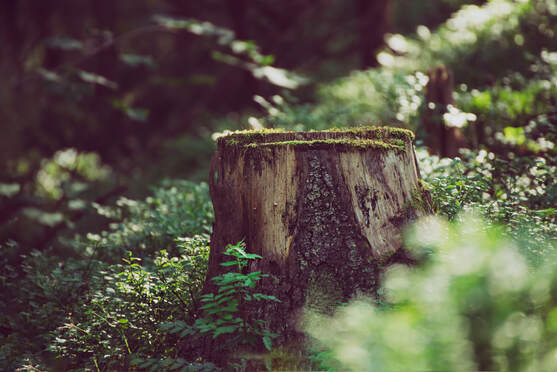|
Yes, tree stumps are still alive. At least, they are for a while after the tree is first cut down. Like all organisms, trees are stubborn and will struggle to survive against all odds. Yes, tree stumps are still alive. At least, they are for a while after the tree is first cut down. Like all organisms, trees are stubborn and will struggle to survive against all odds. Despite the deck being stacked against them, they often manage to hold on for years. When a tree gets cut down, it loses an essential tool for survival: its foliage. Its leaves or needles contain chlorophyll, which is the substance trees use for photosynthesis. The remaining parts (roots and stump) turn immediately to whatever reserves they have, and try to grow enough foliage to get back in the game. The problem with this is that the stump will resist decay until it’s good and dead. So, if you want to reclaim that yard space for your own use, you’ve got to give the once-magnificent specimen a little nudge. 1. Kill the shoots as they growThis is perhaps the easiest way to deal with it, but it takes longer than other methods. If the tree is a poplar or cottonwood, it will actually send new shoots up from the root system, so you’ll get shoots springing out of the soil around the stump. If it’s mowing season, you’ve got nothing to worry about. Just mow as usual. If not, cut them down once they get to about a foot. After the shoots have sprung up a few times, the tree will run out of the resources it needs to grow new foliage. Other types of tree will try to extend new shoots directly from the stump. Best practice is prune them as soon as greenery starts to emerge. 2. Cover the stump up to block it from sunlightThis is another easy but slow method. For this one, you’ll have to be okay with the sight of a stump covered in plastic in your yard. Black garbage bags or tarps are cheap, easy solutions. 3. Apply Epsom salt or rock salt Instead of cutting the stump off from sunlight, you can rob it of another vital resource – water. Salt will dry out the soil and the wood itself, making it impossible for the tree to hydrate. The lazy option is to apply a good layer of salt in a wide swath around the stump, and let it work its way down into the soil. However, this method is slow, and requires a lot of salt. The surefire way to do it is to drill several holes downward from the surface of the stump. Use a drill bit 1” in diameter (3/4 or 7/8” is acceptable if it’s all you have). You don’t want to drill all the way through the stump into the soil, or your salt will escape. Use your best judgment to determine how deep you can safely go. A drill depth of one foot is ideal, but if you punch through, just drill a few more holes to a slightly lesser depth. Then, you can top them off with salt and turn your stump into a raisin. 4. Use a chemical stump killerThey make everything we don’t really need nowadays, including specially formulated stump killing chemicals. You can pick one up, like this one, at your local big box hardware store like Home Depot or Lowe’s, and follow the instructions on the label. 5. Grind it into oblivionGrinding your stump is hands down the swiftest and most effective way to make a stump disappear. A 4-8” depth grind will put it well below the surface of the lawn, kill the stump completely, and accelerate the rotting process. If you want it gone urgently, stump grinding is the way to go.
- Homeowners in Snohomish County and the surrounding area can schedule an on-site estimate for tree and stump removal with Snohomish Tree by filling out this estimate form. |
SNOHOMISH TREE COMPANYFollow our blog for industry insights, company updates, and tips for working with trees. Archives
February 2022
Categories |


 RSS Feed
RSS Feed
